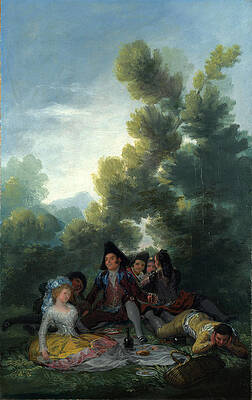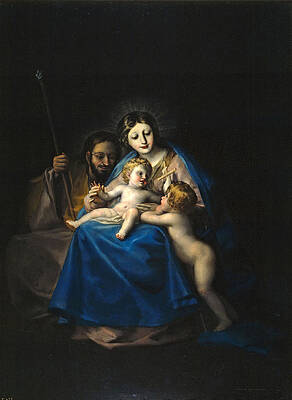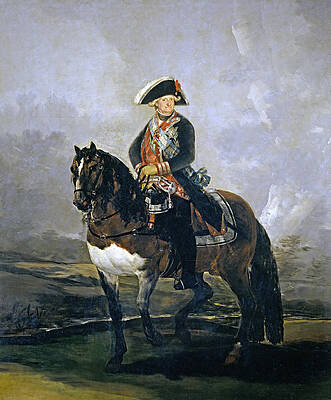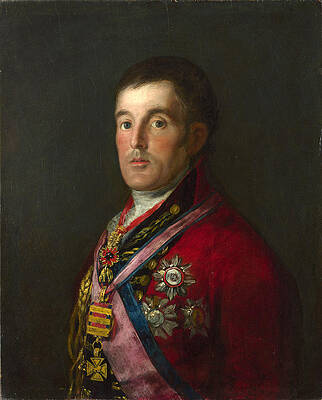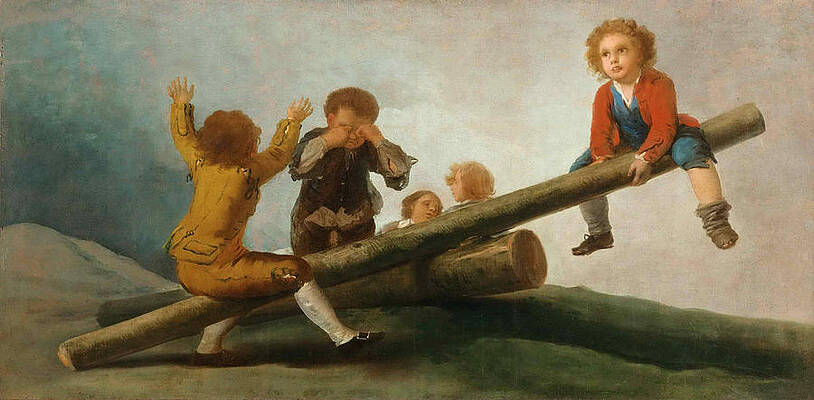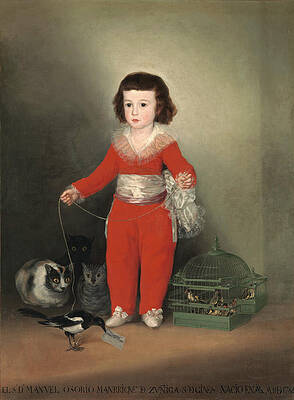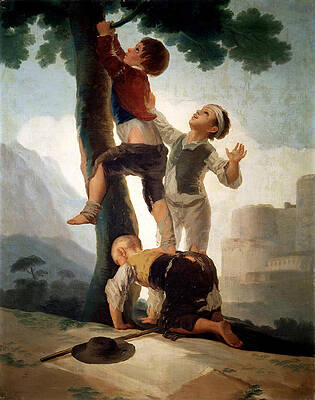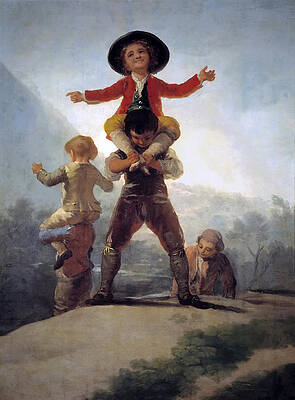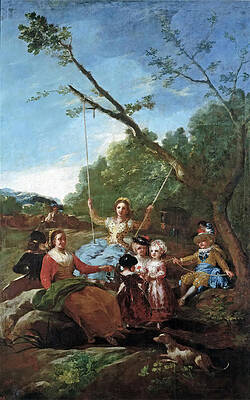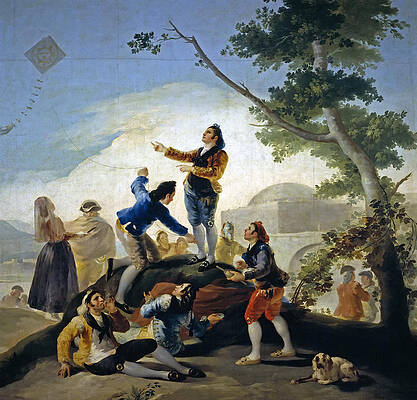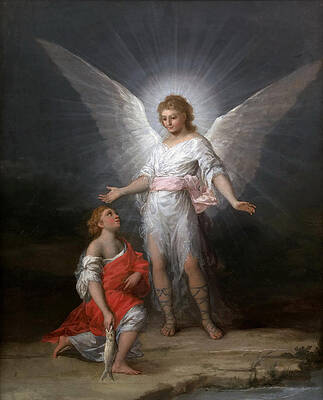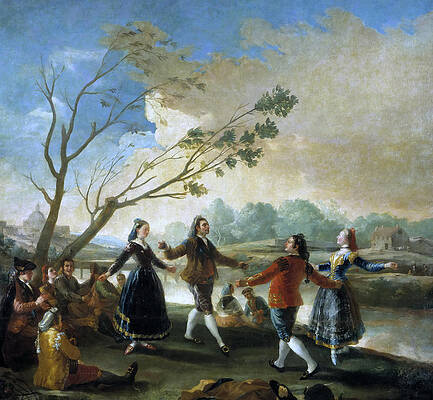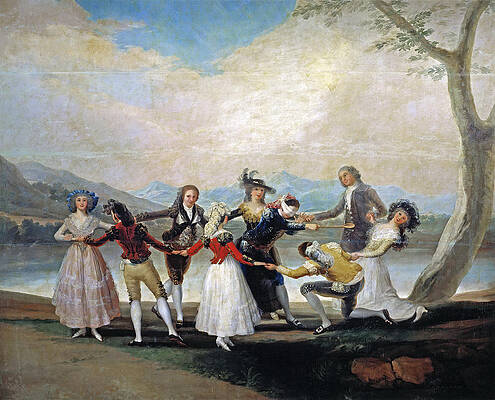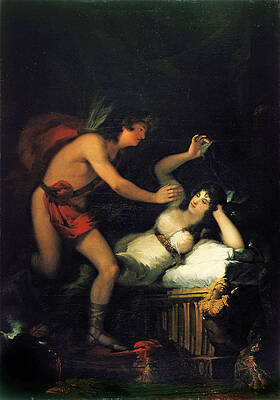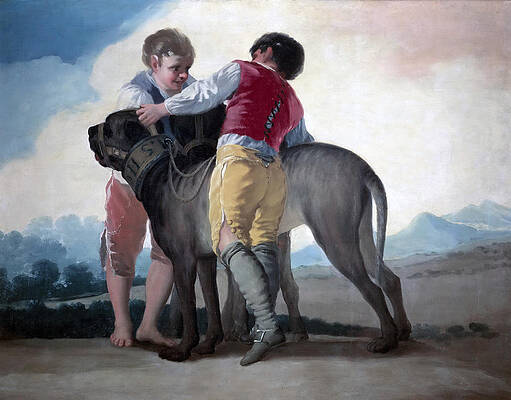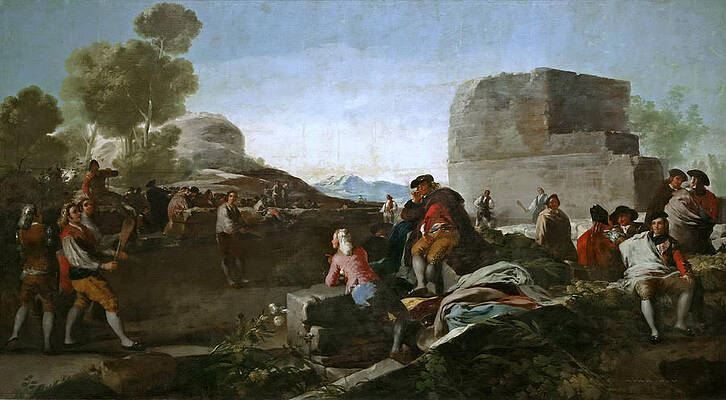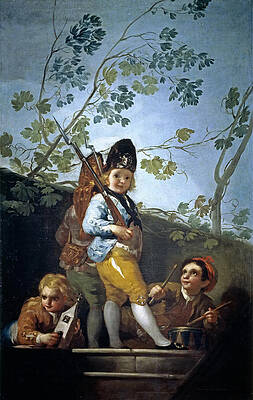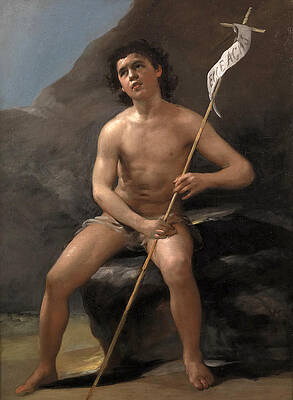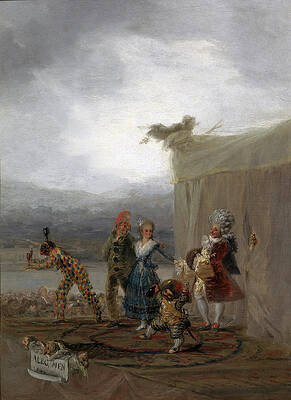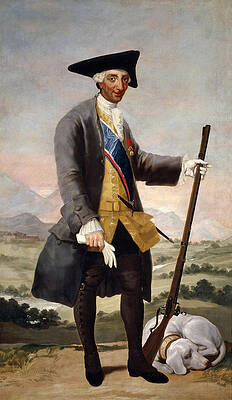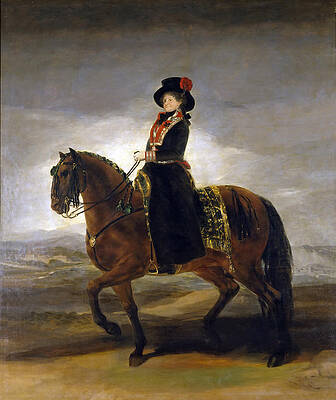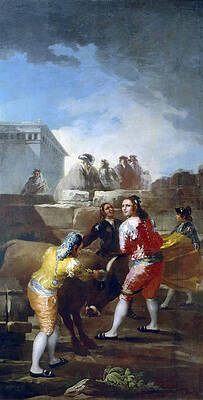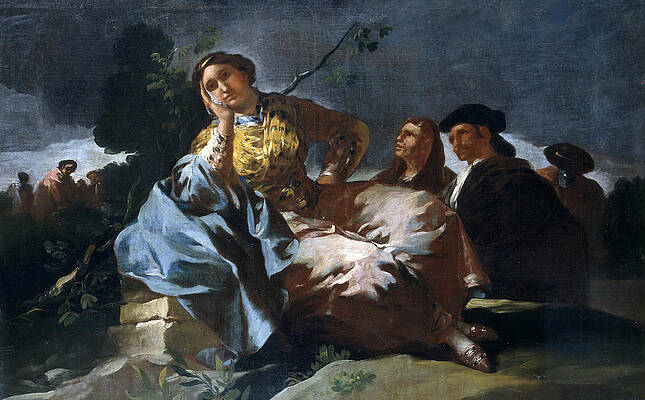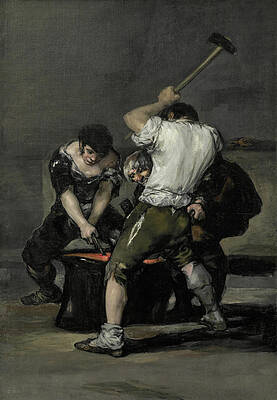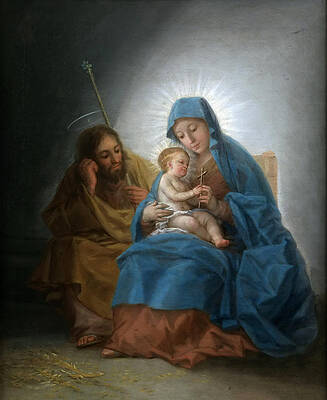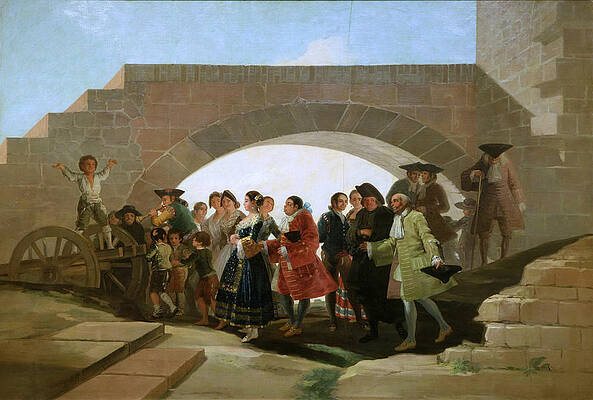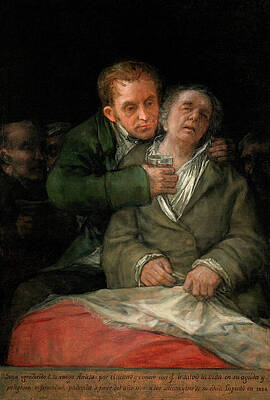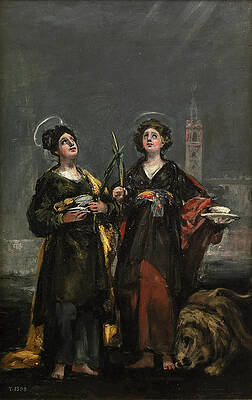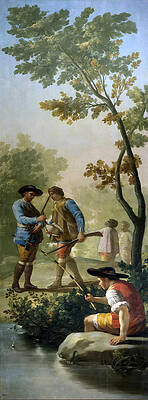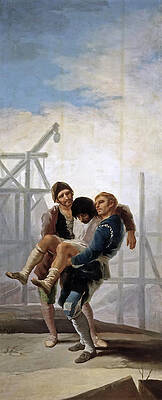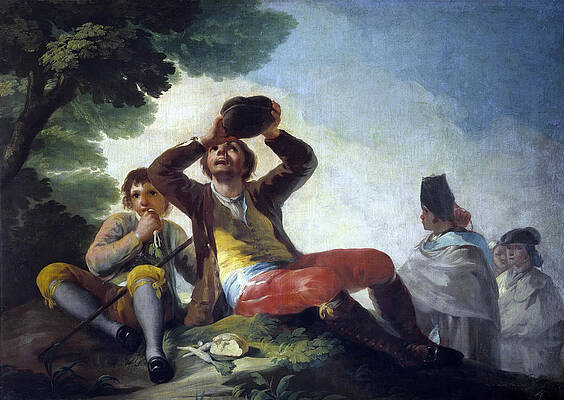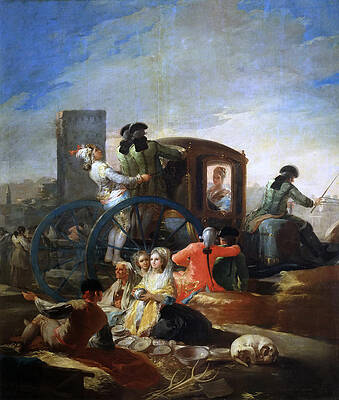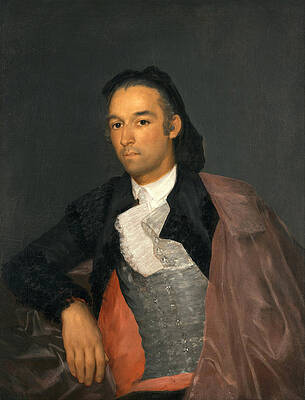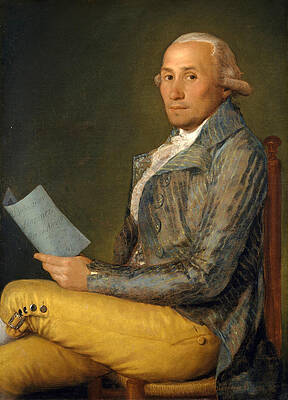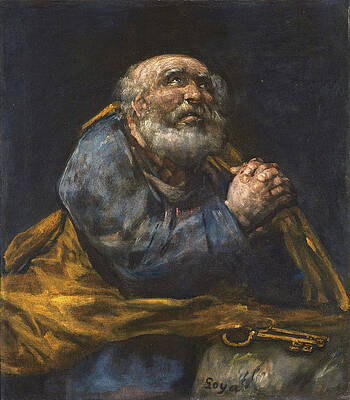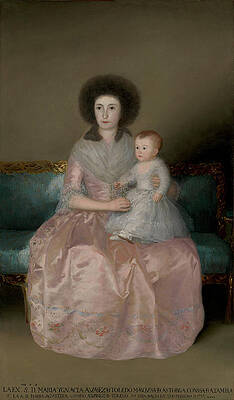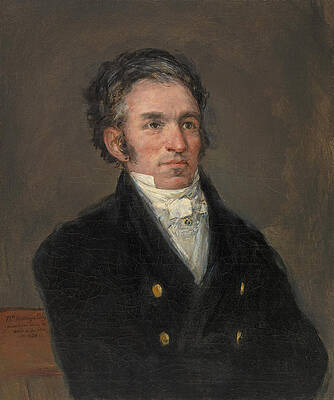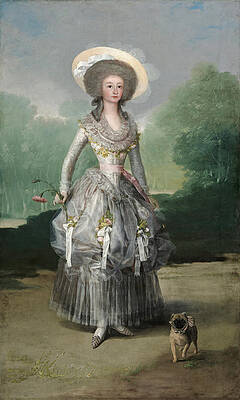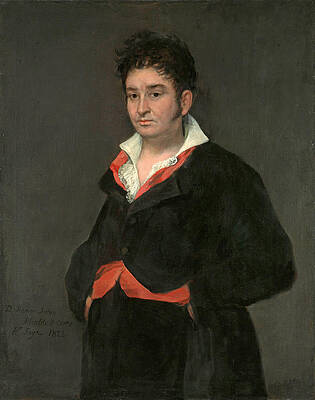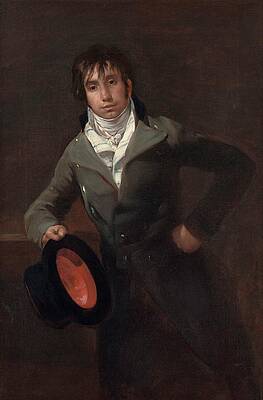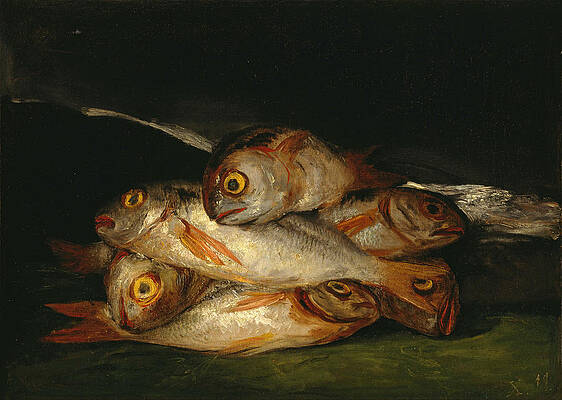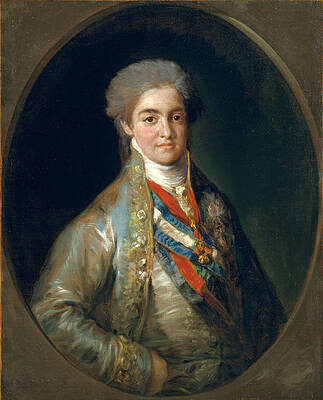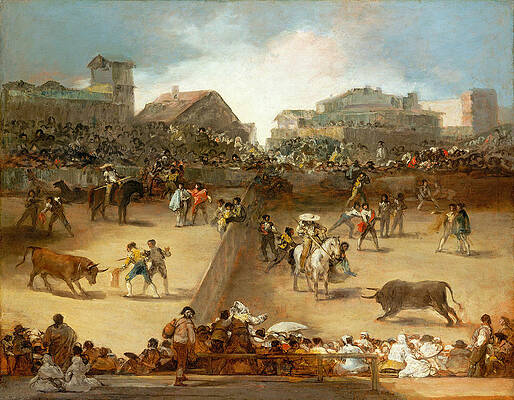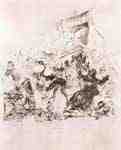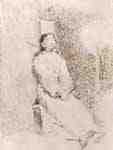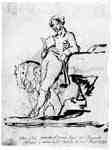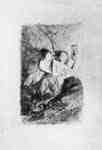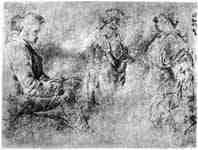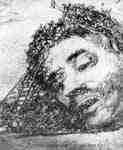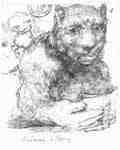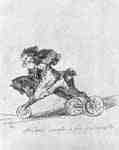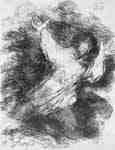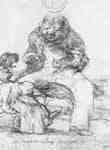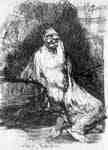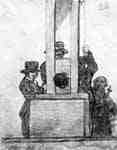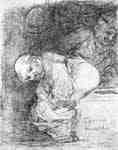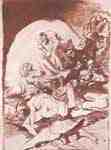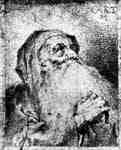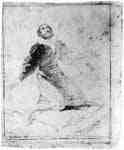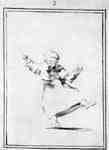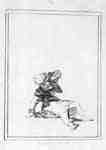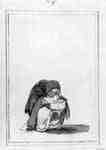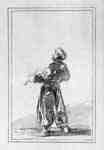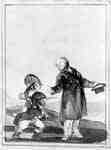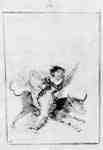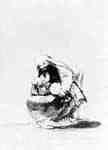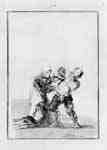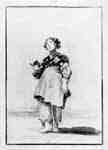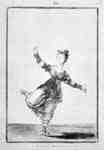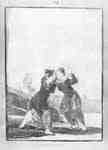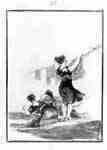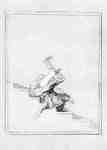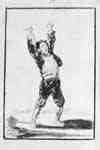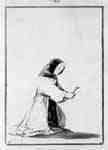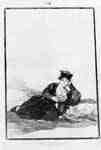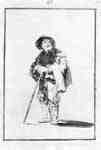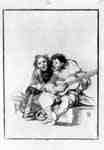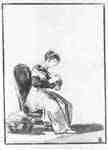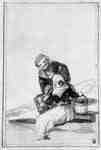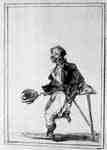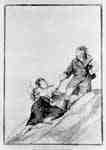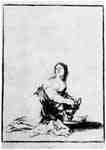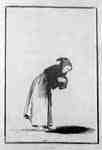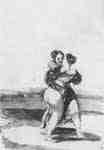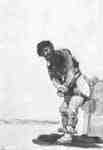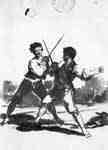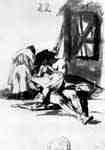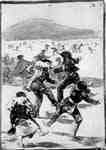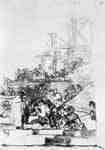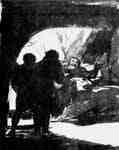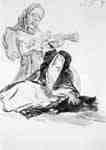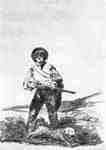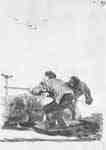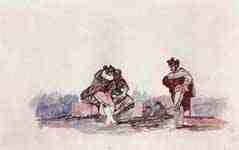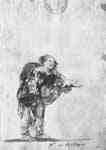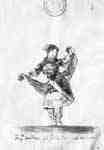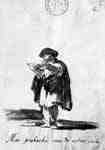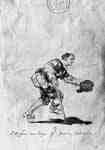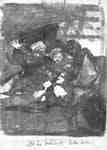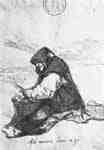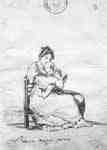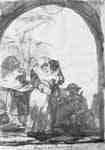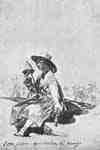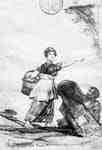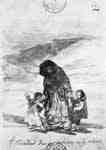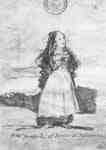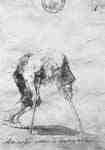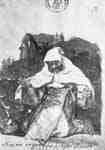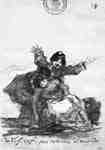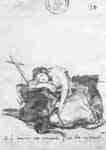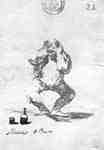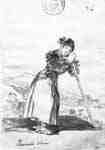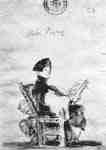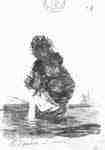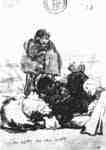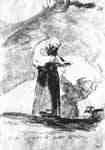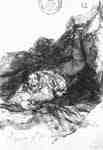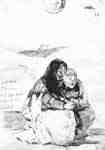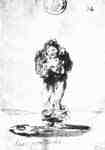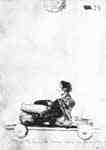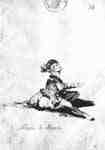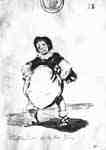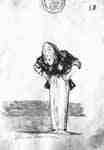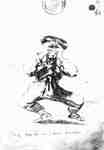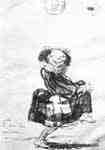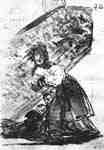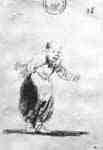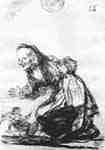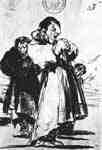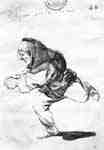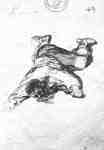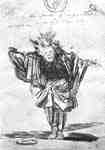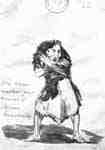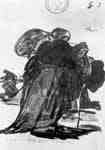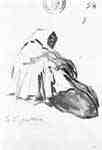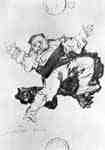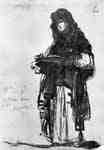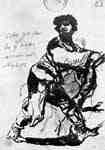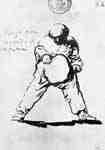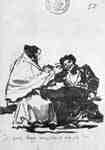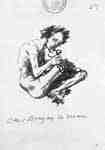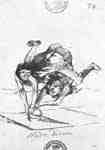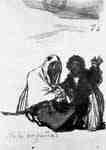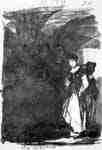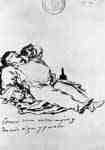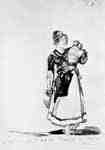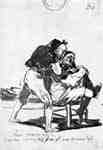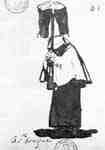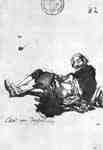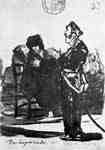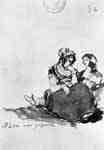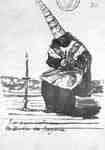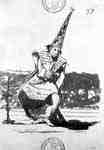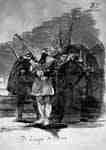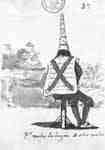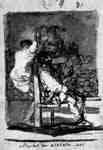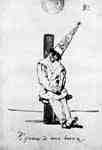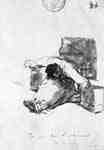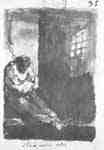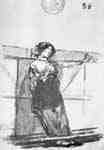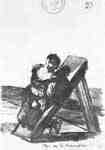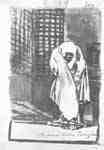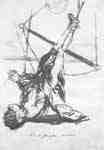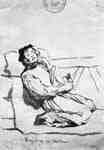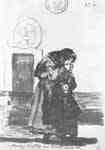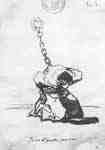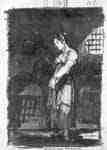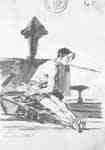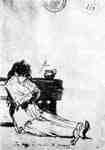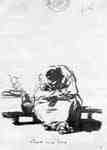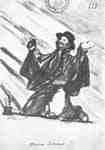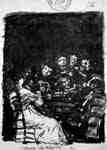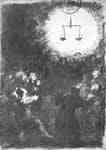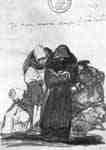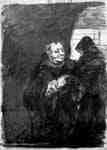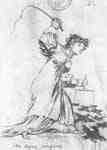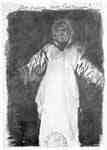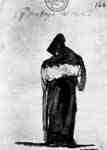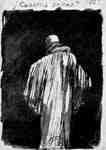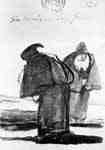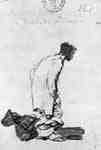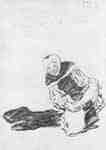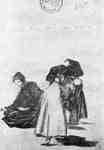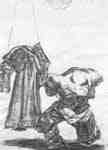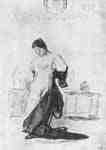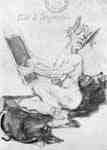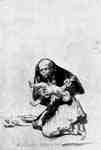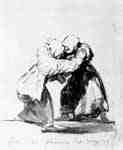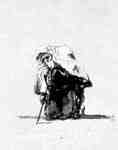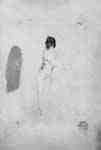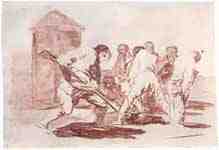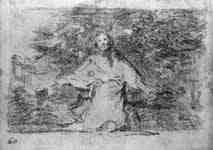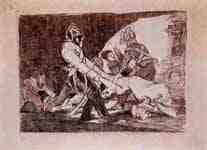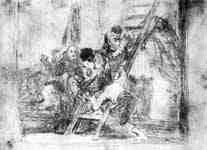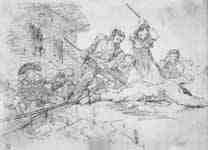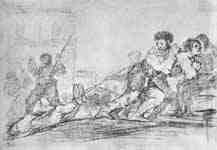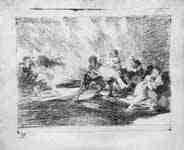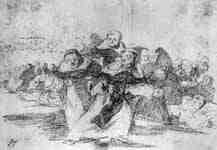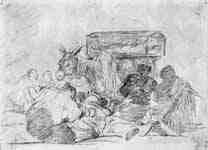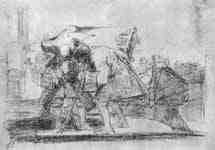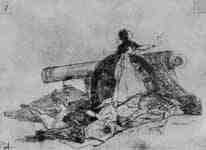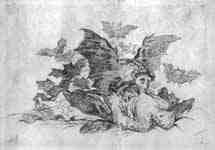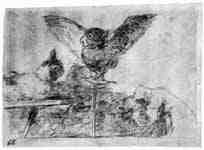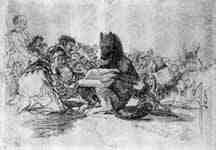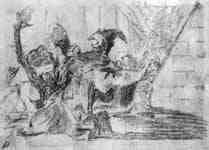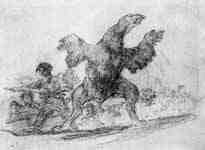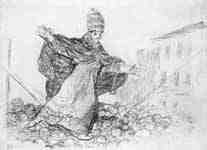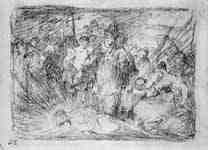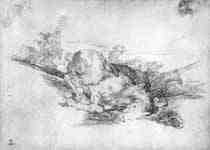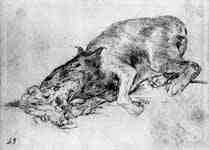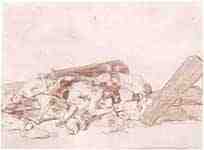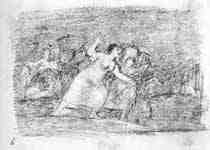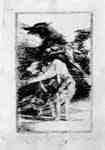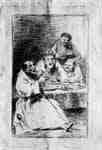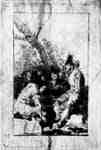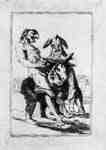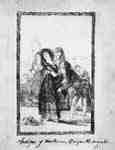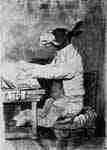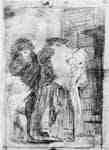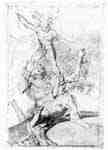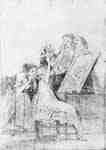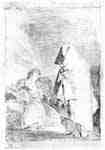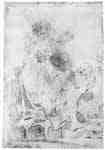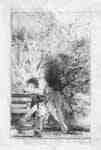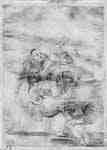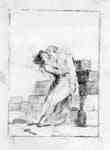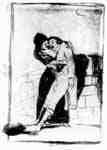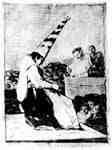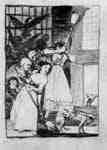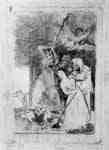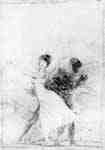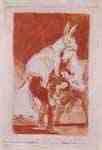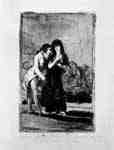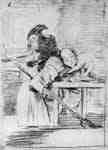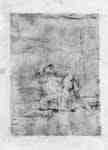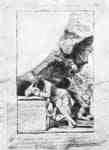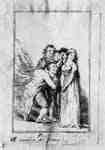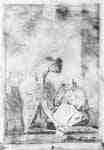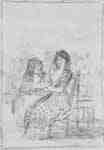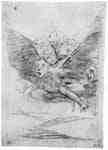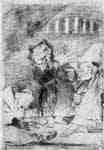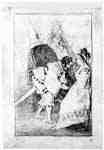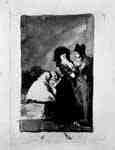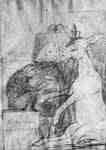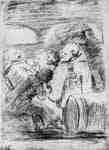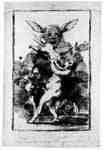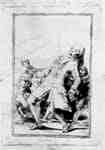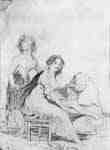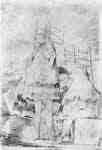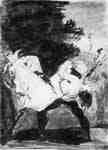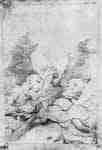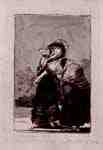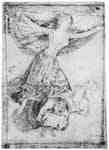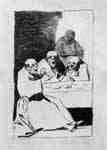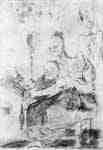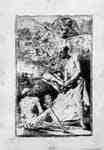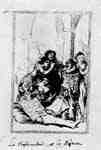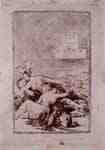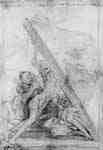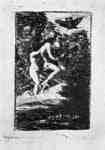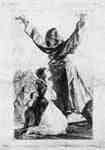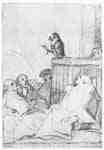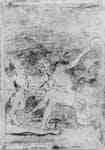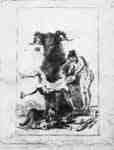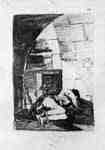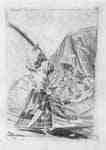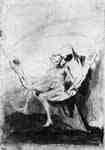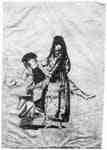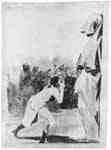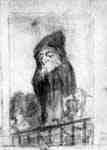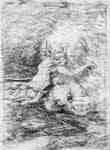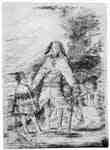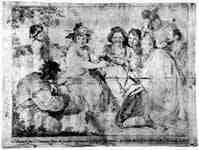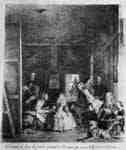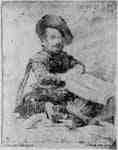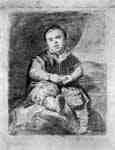Francisco de Goya y Lucientes
Part 1 : Paintings, Drawings
Paintings
Witches Sabbath
Witches' Flight
A Picnic
The Holy Family
Carlos IV on Horseback
The Duke of Wellington
A Scene from The Forcibly B
The Seesaw
Manuel Osorio Manrique de Zuniga
Queen Maria Luisa wearing panniers
Boys Climbing a Tree
The Hawthorn Seller
Little Giants
Children inflating a bladder
The Straw Manikin
The Swing
The Kite
Tobias and the Angel
Dance on the Banks of the Manzanares
The Parasol
Blind man's bluff
Allegory of Love. Cupid and Psyche
The Nude Maja
Boys with Mastiffs
The Snowstorm. Winter
The Game of Pelota
Boys Playing Soldiers
Jose Costa y Bonells. Pepito
Saint John the Baptist as a Child in the Desert
Bullfight in a village
Guitar Player
The Strolling Players
The Second of May 1808. The Charge of the Mamelukes
Portrait of Cardinal Luis Maria de Borbon y Vallabriga
Charles III in hunting Dress
Queen Maria Luisa on Horseback
Amateur Bullfight
Saint Barbara
The Rendezvous
The Forge
The Holy Family
The Wedding
Monk Talking to an Old Woman
Self-Portrait with Dr. Arrieta
The Threshing Floor
The Saints Justa and Rufina
The Angler
The injured Mason
The Drinker
The Pottery Vendor
A Walk in Andalusia
Josefa de Castilla Portugal y van Asbrock de Garcini
Portrait of the Matador Pedro Romero
Sebastian Martinez y Perez
The Repentant St. Peter
Condesa de Altamira and Her Daughter, Maria Agustina
Portrait of Asensio Julia
Senora Sabasa Garcia
Portrait of Jacques Galos
Maria Teresa de Borbon y Vallabriga, later Condesa de Chinchon
Tiburcio Perez y Cuervo, the Architect
The Marquesa de Pontejos
Portrait of Don Ramon Satue
Don Antonio Noriega
Bartolome Sureda y Miserol
Christ on the Cross
Still Life with Golden Bream
Night Scene from the Inquisition
Ignacio Garcini y Queralt Brigadier of Engineers
Ferdinand VII , When Prince of Asturias
Bullfight in a Divided Ring

Dance on The Banks of the Manzanares
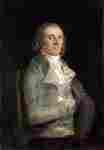


Portrait of the Toreador Jose Romero

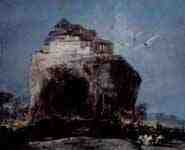
Attack attack on a castle on a rock
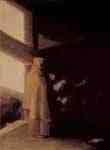


The carcass of the Brebeuf Jesuit
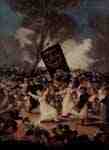

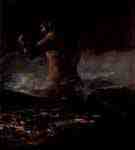
 The grinder ( " El Afilador " )
The grinder ( " El Afilador " )
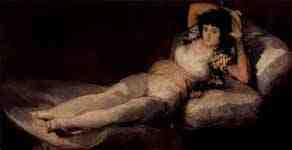
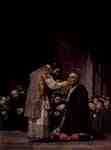
The Last Communion of St Joseph of Calasanz


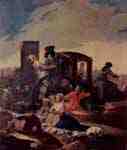

Vesper outdoors
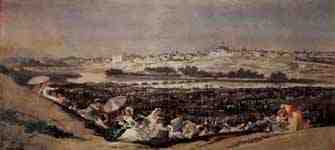
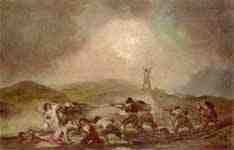
Episode in the Spanish War of Independence
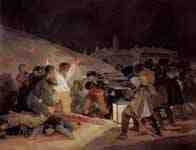

Execution of the Rebels , detail
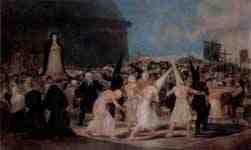
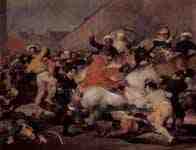
Battle with the Mamelukes on 2 May 808 in Madrid
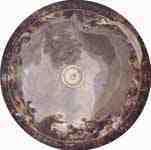
Dome fresco in San Antonio de la Florida , General View

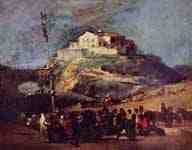

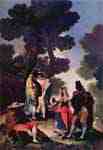
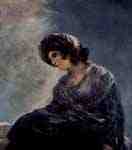

Portrait of Bartolomé Sureda y Miserol

Portrait of Doña Teresa Sureda
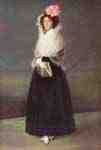
Portrait of the Countess del Carpio

Portrait of Doña Isabel de Porcel Cabos

Portrait of Doña Tadea Arias de Enriquez

Portrait of the family of the Duke of Osuna
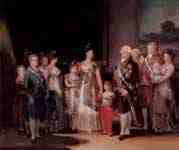
Portrait of the Family of Charles IV
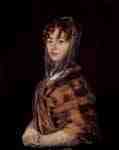
Portrait of Francisca Sabasa y Garcia
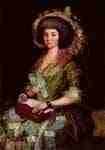
Portrait of the Wife of Juan Agustin Cean Bermudez
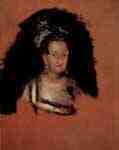
Portrait of the Infanta Maria Josefa
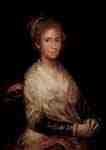
Portrait of Josefa Bayeu de Goya


Portrait of Maria Teresa Cayetana de Silva

Portrait of the Marquesa de Pontejos y Sandoval

Portrait of the Marquesa of Villafranca
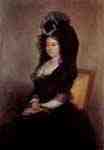
Portrait of Narcisa de Goicoechea Baranana
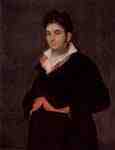
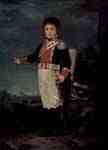
Don Sebastian Gabriel de Borbon y Braganza

Portrait of Ferdinand VII in king vestments
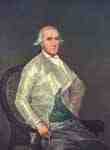

Portrait of Count Fernand Núnez VII

Portrait of the Duke of Wellington

Portrait of Juan Antonio Llorente
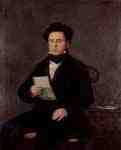
Portrait of Juan Bautista de Muguiro

Cardinal Luis Maria de Borón y Vallabriga
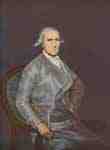
Portrait of the painter D. Francisco Bayeu y Subias

Portrait of Pepito Costa y Bonelis
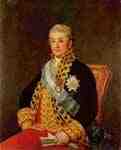
Portrait of José Antonio Caballero Marquéz
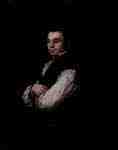
Portrait of Tiburcio Pérez y Cuervo
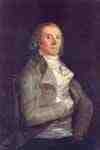
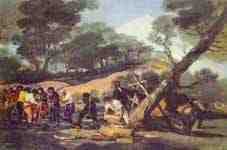
Powder production in the Sierra de Tardienta



Woman of the people in elegant dress


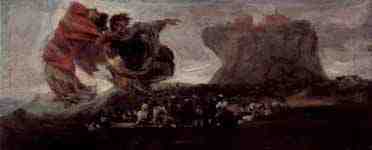
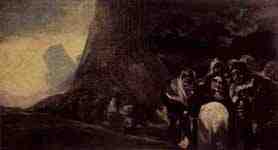

Saturn devouring one of his children

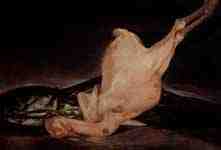
Still life , plucked turkey and pan
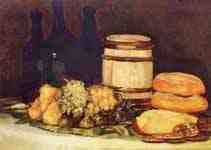
Still life with fruit , bottles, breads

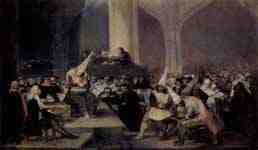
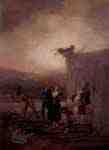
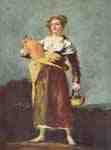
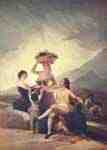
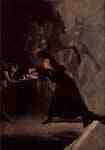


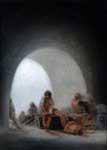

Allegory of Love , Cupid and Psyche



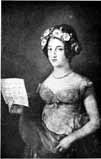

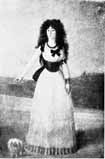

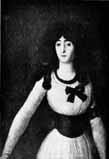

THE CONDESA DE ALTAMIRA AND DAUGHTER


THE INFANTE DON LUIS DE BORBON


DON MANUEL LAPEÑA, MARQUES DE BONDAD REAL
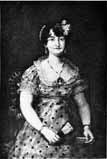

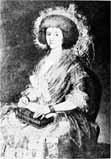

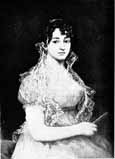
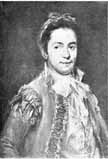
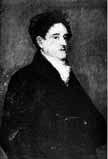

CONDESA-DUQUESA DE BENAVENTE Y OSUNA
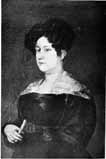
DOÑA MANUELA DE ALVAREZ COIÑAS
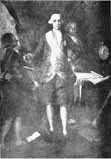
Drawings
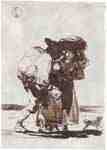
 Francis Borgia is struggling for an unrepentant sinner
Francis Borgia is struggling for an unrepentant sinner
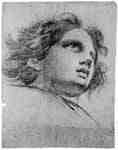










































































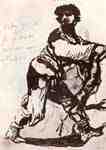
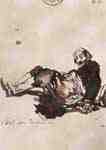


Portrait of the Duc of Wellington
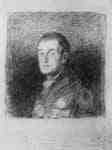
Portrait of the Duc of Wellington
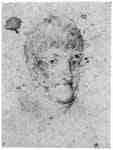


 Sitting Majo, the clock with the hands pretending
Sitting Majo, the clock with the hands pretending
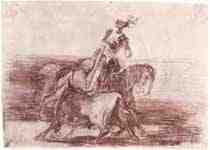 Drawing for " La Tauromaquia "
Drawing for " La Tauromaquia "
 Drawings for "Disasters de la Guerre " :
Drawings for "Disasters de la Guerre " :
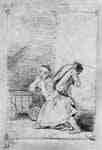


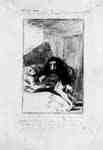




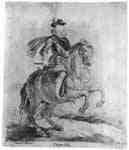

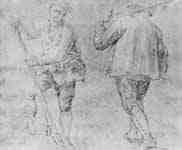

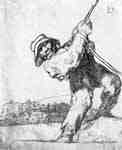

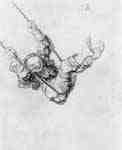
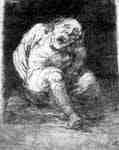
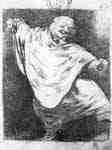
Fine Art Prints | Greeting Cards | iPhone Cases | Tote Bags | Clothing | Lifestyle | Beach ...
Francisco José de Goya y Lucientes (Spanish: [fɾanˈθisko xoˈse ðe ˈɣoʝa i luˈθjentes]; 30 March 1746 – 16 April 1828) was a Spanish romantic painter and printmaker regarded both as the last of the Old Masters and the first of the moderns. Goya was court painter to the Spanish Crown; throughout the Peninsular War he remained in Madrid, where he painted the portrait of Joseph Bonaparte, pretender to the Spanish throne, and documented the war in the masterpiece of studied ambiguity known as the Desastres de la Guerra. Through his works he was both a commentator on and chronicler of his era. The subversive imaginative element in his art, as well as his bold handling of paint, provided a model for the work of artists of later generations, notably Manet, Picasso and Francis Bacon.
Biography
Early years
Francisco de Goya -supposed self-portrait
Goya was born in Fuendetodos, Aragón, Spain, on 30 March 1746 to José Benito de Goya y Franque and Gracia de Lucientes y Salvador. His family lived in a home bearing the family crest of his mother. His father, who was of Basque origin, earned his living as a gilder.[5] About 1749, the family bought a house in the city of Saragossa and some years later moved into it; Goya may have attended school at Escuelas Pias. He formed a close friendship with Martin Zapater at this time, and their correspondence from the 1770s to the 1790s is a valuable source for understanding Goya's early career at the court of Madrid. At age 14, Goya studied under the painter José Luzán, in Luzán's workshop he was copying stamps for 4 years until he decided to work by his own, as he wrote later on "paint from my invention".[6] He moved to Madrid where he studied with Anton Raphael Mengs, a painter who was popular with Spanish royalty. He clashed with his master, and his examinations were unsatisfactory. Goya submitted entries for the Real Academia de Bellas Artes de San Fernando in 1763 and 1766, but was denied entrance.
La cometa, 1777–78, one of Goya's tapestry cartoons
He then relocated to Rome, where in 1771 he won second prize in a painting competition organized by the City of Parma. Later that year, he returned to Saragossa and painted parts of the cupolas of the Basilica of the Pillar (including Adoration of the Name of God), a cycle of frescoes in the monastic church of the Charterhouse of Aula Dei, and the frescoes of the Sobradiel Palace. He studied with Francisco Bayeu y Subías and his painting began to show signs of the delicate tonalities for which he became famous.
Goya married Bayeu's sister Josefa (he nicknamed her "Pepa") on 25 July 1773. This marriage, and Francisco Bayeu's membership of the Real Academia de Bellas Artes de San Fernando (from the year 1765) helped Goya to procure work as a painter of designs to be woven by the Royal Tapestry Factory. There, over the course of five years, he designed some 42 patterns, many of which were used to decorate (and insulate) the bare stone walls of El Escorial and the Palacio Real del Pardo, the residences of the Spanish monarchs near Madrid. This brought his artistic talents to the attention of the Spanish monarchs who later would give him access to the royal court. He also painted a canvas for the altar of the Church of San Francisco El Grande in Madrid, which led to his appointment as a member of the Royal Academy of Fine Art.
Mid-career
De Goya's 1790 Retrato de Martín Zapater at Museo de Arte de Ponce, Ponce, Puerto Rico
In 1783, the Count of Floridablanca, a favorite of Charles III of Spain, commissioned Goya to paint his portrait. He also became friends with Crown Prince Don Luis, and spent two summers with him, painting portraits of both the Infante and his family. During the 1780s, his circle of patrons grew to include the Duke and Duchess of Osuna, the King and other notable people of the kingdom whom he painted. In 1786, Goya was given a salaried position as painter to Charles III. After the death of Charles III in 1788 and revolution in France in 1789, during the reign of Charles IV, Goya reached his peak of popularity with royalty.[7]
Charles IV of Spain and His Family, 1800. Théophile Gautier described the figures as looking like "the corner baker and his wife after they won the lottery".[8]
In 1789 he was made court painter to Charles IV and in 1799 was appointed First Court Painter with a salary of 50,000 reales and 500 ducats for a coach. He painted the King and the Queen, royal family pictures, portraits of the Prince of the Peace and many other nobles. His portraits are notable for their disinclination to flatter, and in the case of Charles IV of Spain and His Family, the lack of visual diplomacy is remarkable.[9] Modern interpreters have seen this portrait as social satire; it is thought to reveal the corruption behind the rule of Charles IV. Under his reign his wife Louisa was thought to have had the real power, and thus Goya placed her at the center of the group portrait. From the back left of the painting one can see the artist himself looking out at the viewer, and the painting behind the family depicts Lot and his daughters, thus once again echoing the underlying message of corruption and decay.
Goya received orders from many of the Spanish nobility. Among those from whom he procured portrait commissions were Pedro Téllez-Girón, 9th Duke of Osuna and his wife María Josefa Pimentel, 12th Countess-Duchess of Benavente, María del Pilar de Silva, 13th Duchess of Alba (universally known simply as the "Duchess of Alba"), and her husband José María Álvarez de Toledo, 15th Duke of Medina Sidonia, and María Ana de Pontejos y Sandoval, Marchioness of Pontejos.
At some time between late 1792 and early 1793, a serious illness (the exact nature of which is not known) left Goya deaf, and he became withdrawn and introspective. During his recuperation, he undertook a series of experimental paintings. His experimental art—which would encompass paintings and drawings as well as a bitterly expressive series of aquatinted etchings, published in 1799 under the title Caprichos—was done in parallel to his more official commissions of portraits and religious paintings. In 1798 he painted luminous and airy scenes for the pendentives and cupola of the Real Ermita (Chapel) of San Antonio de la Florida in Madrid. Many of these depict miracles of Saint Anthony of Padua set in the midst of contemporary Madrid.
The Third of May 1808, 1814. Oil on canvas, 266 х 345 cm. Museo del Prado, Madrid
Later years
French forces invaded Spain in 1808, leading to the Peninsular War of 1808–1814. The extent of Goya's involvement with the court of the "Intruder king", Joseph I, the brother of Napoleon Bonaparte, is not known; he did paint works for French patrons and sympathisers, but kept neutral during the fighting. After the restoration of the Spanish king, Ferdinand VII, in 1814, Goya denied any involvement with the French. When his wife Josefa died in 1812, he was mentally and emotionally processing the war by painting The Charge of the Mamelukes and The Third of May 1808, and preparing the series of prints later known as The Disasters of War (Los desastres de la guerra). Ferdinand VII returned to Spain in 1814 but relations with Goya were not cordial. He painted portraits of the king for a variety of organizations, but not for the king himself.
Leocadia Weiss (née Zorrilla, b. 1790)[10][11] the artist's maid, younger by 35 years, and a distant relative,[12] lived with and cared for Goya after Bayeu's death. She stayed with him in his Quinta del Sordo villa until 1824 with her daughter Rosario.[13] Leocadia was probably similar in features to Goya's first wife Josefa Bayeu, to the point that one of his well known portraits bears the cautious title of Josefa Bayeu (or Leocadia Weiss).[14]
The Milkmaid of Bordeaux, 1825–27, is the third and final Goya portrait which may depict Leocadia Weiss. This might also be of Leocadia's daughter Rosario.[15] Its colourisation and mood is very similar to the Lecodia "Black Painting".
Not much is known about her beyond her fiery temperament. She was likely related to the Goicoechea family, a wealthy dynasty into which the artist's son, the feckless Javier, had married. It is believed she held liberal political views and was unafraid of expressing them, a fact met with disapproval by Goya's family. It is known that Leocadia had an unhappy marriage with a jeweler, Isideo Weiss, but was separated from him since 1811. Her husband cited "illicit conduct" during the divorce proceedings. She had two children before the marriage dissolved, and bore a third, Rosario, in 1814 when she was 26. Isideo was not the father, and it has often been speculated—although with little firm evidence—that the child belonged to Goya.[16] There has been much speculation that Goya and Weiss were romantically linked, however, it is more likely the affection between them was sentimental.[17]
It is not known whether this 1805 Goya portrait is of his wife Josefa Bayeu or of Leocadia Weiss
Goya's works from 1814 to 1819 are mostly commissioned portraits, but also include the altarpiece of Santa Justa and Santa Rufina for the Cathedral of Seville, the print series of La Tauromaquia depicting scenes from bullfighting, and probably the etchings of Los Disparates.
In 1819, with the idea of isolating himself, he bought a country house by the Manzanares river just outside of Madrid. It was known as the Quinta del Sordo (roughly, "House of the Deaf Man", titled after its previous owner and not after Goya himself). There he created the Black Paintings with intense, haunting themes, reflective of the artist's fear of insanity and his outlook on humanity. Several of these, including Saturn Devouring His Son, were painted directly onto the walls of his dining and sitting rooms.
Goya lost faith in or became threatened by the restored Spanish monarchy's anti-liberal political and social stance and left Spain in May 1824 for Bordeaux and then Paris.[11] He travelled to Spain in 1826, but returned to Bordeaux, where he died of a stroke in 1828, at the age of 82. He was of the Catholic faith and was buried in Bordeaux; in 1919 his remains were transferred to the Royal Chapel of St. Anthony of La Florida in Madrid.
Leocadia was left nothing in Goya's will; mistresses were often omitted in such circumstances, but it is also likely that he did not want to dwell on his mortality by thinking about or revising his will. She wrote to a number of Goya's friends to complain of her exclusion but many of her friends were Goya's also and by then they were old men and had died, or died before they could reply. Largely destitute she moved into rented accommodation and passed on her copy of the Caprichos for free.[18]
Work
See also List of works by Francisco Goya
Goya painted the Spanish royal family, including that of Charles IV of Spain and of Ferdinand VII. His thematic range extended from merry festivals for tapestries, draft cartoons, to scenes of war and human debasement. This evolution reflects the darkening of his temper. Modern physicians suspect that the lead in his pigments poisoned him and caused his deafness after 1792. Near the end of his life, he became reclusive and produced frightening and obscure paintings of insanity, madness, and fantasy, while the style of the Black Paintings prefigures the expressionist movement.
Maja
The Nude Maja, ca. 1800. Said to be the first explicit depiction of female pubic hair in a large Western painting, though others had hinted at it before
The Clothed Maja, ca. 1803, the more chaste, but teasingly provocative, companion panel
Two of Goya's best known paintings are The Nude Maja (La maja desnuda) and The Clothed Maja (La maja vestida). They depict the same woman in the same pose, naked and clothed, respectively. Without a pretense to allegorical or mythological meaning, the painting was "the first totally profane life-size female nude in Western art".[19]
The identity of the Majas is uncertain. The most popularly cited models are the Duchess of Alba, with whom Goya was sometimes thought to have had an affair, and Pepita Tudó, mistress of Manuel de Godoy. Neither theory has been verified, and it remains as likely that the paintings represent an idealized composite.[20] The paintings were never publicly exhibited during Goya's lifetime. They were owned by Godoy, the Prime Minister of Spain and a favorite of the Queen, María Luisa.[21] In 1808 all Godoy's property was seized by Ferdinand VII after his fall from power and exile, and in 1813 the Inquisition confiscated both works as 'obscene', returning them in 1836 to the Academy of Fine Arts of San Fernando.[22]
Darker subject matter
Yard with Lunatics, 1794. Oil on tin-plated iron, 43.8 x 32.7 cm
In a period of convalescence during 1793–1794, Goya completed a set of eleven small pictures painted on tin; known as Fantasy and Invention, they mark a significant change in his art. They no longer represent the world of popular carnival depicted in several of his tapestry cartoons, but rather a dark and dramatic realm of fantasy nightmare. Yard with Lunatics is a horrifying, imaginary vision of loneliness, fear, and social alienation – a departure from the rather more superficial treatment of mental illness in the works of earlier artists such as Hogarth. The condemnation of brutality towards prisoners (whether criminal or insane) is a subject that Goya assayed in later works[23] that focused on the degradation of the human figure.[24]
As he completed Yard with Lunatics, Goya was himself undergoing a physical and mental breakdown. It happened a few weeks after the French declaration of war on Spain, and Goya’s illness was developing. A contemporary reported, "The noises in his head and deafness aren’t improving, yet his vision is much better and he is back in control of his balance."[25] These symptoms may indicate a prolonged viral encephalitis, or possibly a series of miniature strokes resulting from high blood pressure and which affected the hearing and balance centers of the brain. The triad of tinnitus, episodes of imbalance, and progressive deafness are also typical of Ménière's disease.[26] It is even possible that Goya suffered from cumulative lead poisoning, as he used massive amounts of lead white in his paintings, both as a canvas primer and as a primary color.[27][28] Other postmortem diagnostic assessments point toward paranoid dementia due to an unknown brain trauma (perhaps resulting from the unknown illness which he reported). If this is the case, from here on we see an insidious assault on his faculties manifesting as paranoid features in his paintings, and culminating in his black paintings, especially Saturn Devouring His Sons.[29] Yet through his artistry Goya could transform his personal demons into horrific and fantastic imagery that speaks universally, and allows his audience to find its own catharsis in these images.[30]
Caprichos and tapestry cartoons
Main article: Caprichos
The Sleep of Reason Produces Monsters, c. 1797, 21.5 cm × 15 cm. One of the most famous prints of Los Caprichos.
In 1799 Goya published a series of 80 prints titled Caprichos depicting what he described as "the innumerable foibles and follies to be found in any civilized society, and from the common prejudices and deceitful practices which custom, ignorance, or self-interest have made usual".[31]
The dark visions depicted in these prints are partly explained by his caption, "The sleep of reason produces monsters". Yet these are not solely bleak in nature and demonstrate the artist's sharp satirical wit, particularly evident in etchings such as Hunting for Teeth. Additionally, one can discern a thread of the macabre running through Goya's work, even in his earlier tapestry cartoons.[note 1] Mostly popularist in a rococo style, the cartoons were completed early in his career, when he was largely unknown and actively seeking commissions. In 1774, he was asked by the German artist Anton Raphael Mengs, on behalf of the Spanish crown, to undertake the series. While designing tapestries was neither prestigious nor well paid, Goya used them, along with his early engravings, to bring himself to wider attention.[32] They afforded his first contact with the Spanish monarchy that was to eventually appoint him court painter.[33]
The Disasters of War
Main article: The Disasters of War
What more can one do?, from The Disasters of War, 1812–15
In the 1810s, Goya created a set of aquatint prints titled The Disasters of War. Although he did not make known his intention when creating the plates, art historians view them as a visual protest against the violence of the 1808 Dos de Mayo Uprising, the subsequent Peninsular War of 1808–14 and the setbacks to the liberal cause following the restoration of the Bourbon monarchy in 1814. The scenes are singularly disturbing, sometimes macabre in their depiction of battlefield horror, and represent an outraged conscience in the face of death and destruction.[34] They were not published until 1863, 35 years after his death. It is likely that only then was it considered politically safe to distribute a sequence of artworks criticising both the French and restored Bourbons.[35]
The first 47 plates in the series focus on incidents from the war and show the consequences of the conflict on individual soldiers and civilians. The middle series (plates 48 to 64) record the effects of the famine that hit Madrid in 1811–12, before the city was liberated from the French. The final 17 reflect the bitter disappointment of liberals when the restored Bourbon monarchy, encouraged by the Catholic hierarchy, rejected the Spanish Constitution of 1812 and opposed both state and religious reform. Since their first publication, Goya's scenes of atrocities, starvation, degradation and humiliation have been described as the "prodigious flowering of rage".[36]
Black Paintings
Main article: Black Paintings
In an array of earthen colors, a black silhouetted horned figure to the left foreground presides over and addresses a large circle of a tightly packed group of wide-eyed intense, scary, elderly and unruly women.
Witches' Sabbath or Aquelarre is one of 14 from the Black Paintings series.
In later life Goya bought a house, called Quinta del Sordo ("Deaf Man's House"), and painted many unusual paintings on canvas and on the walls, including references to witchcraft and war. One of these is the famous work Saturn Devouring His Son (known informally in some circles as Devoration or Saturn Eats His Child), which displays a Greco-Roman mythological scene of the Titan Saturn consuming a child, possibly a reference to Spain's ongoing civil conflicts.[37] The series has been described as "the most essential to our understanding of the human condition in modern times, just as Michelangelo's Sistine ceiling is essential to understanding the tenor of the 16th century".[38]
At the age of 75, alone and in mental and physical despair, he completed the work as one of his 14 Black Paintings,[note 2] all of which were executed in oil directly onto the plaster walls of his house. Goya did not intend for the paintings to be exhibited, did not write of them,[note 3] and likely never spoke of them.[39] It was not until around 1874, some 50 years after his death, that they were taken down and transferred to a canvas support. Many of the works were significantly altered during the restoration, and in the words of Arthur Lubow what remain are "at best a crude facsimile of what Goya painted."[40] The effects of time on the murals, coupled with the inevitable damage caused by the delicate operation of mounting the crumbling plaster on canvas, meant that most of the murals suffered extensive damage and loss of paint. Today they are on permanent display at the Museo del Prado, Madrid.
Films
Goya's Ghosts (2006) is a film directed by Academy Award winner Miloš Forman.
Volavérunt (1999) directed by Bigas Luna and based on the homonym novel of Antonio Larreta.
Goya in Bordeaux (1999) Spanish historical drama film written and directed by Carlos Saura about the life of Francisco de Goya.
Goya - Der lange Weg der Erkenntnis (1971) is an East German film directed by Konrad Wolf.
The Naked Maja (1958) directed by Henry Koster. A film about the painter Francisco Goya and the Duchess of Alba; Anthony Franciosa played Goya and Ava Gardner played The Duchess.
Notes
The word cartoon is derived from the Italian cartone, which describes a large sheet of paper used in preparation for a later painting or tapestry.
A contemporary inventory compiled by Goya's friend, the painter Antonio de Brugada, records 15. See Lubow, 2003
As he had with for the "Caprichos" and "The Disasters of War" series. Licht 159
References
"Goya". Random House Webster's Unabridged Dictionary.
Fred Kleiner (7 January 2009). Gardner's Art through the Ages: The Western Perspective. Cengage Learning. p. 283. ISBN 0-495-57364-7. "Romantic artists, including Francisco Goya in Spain and Théodore Géricault and Eugène Delacroix in France, explored the exotic, erotic, and fantastic in their paintings."
Esdaile 2003, p. 235.
Rico, Pablo J., Goya and Modernism, XXIII Bienal Internacional de São Paulo at the Wayback Machine (archived January 17, 2008), archived from the original on 17 January 2008.
Connell, 6–7
Connell, 14
Galeria de Arte transparencias Ancora A Todo Color 1961 Goya biography from the Museo del Prado. As quoted on eeweems.com
Chocano, Carina. "Goya's Ghosts". Los Angeles Times, 20 July 2007. Retrieved on 18 January 2008.
Licht, Fred: Goya: The Origins of the Modern Temper in Art, page 68. Universe Books, 1979. "Even if one takes into consideration the fact that Spanish portraiture is often realistic to the point of eccentricity, Goya's portrait still remains unique in its drastic description of human bankruptcy".
Junquera, 13
Stevenson, 243
Gassier, 103
Buchholz, 79
Connell, 28
Hughes, 402
Hughes, 372
Junquera, 68
Connell, 235
Licht, 83
"The Nude Maja, the Prado". Retrieved 17 July 2010.
The unflinching eye.. The Guardian, October 2003.
Museo del Prado, Catálogo de las pinturas. Ministerio de Educación y Cultura, Madrid, 1996. 138. ISBN 84-87317-53-7
Thomas Crow (2007). "3: Tensions of the Enlightenment, Goya". In Stephen Eisenman. Nineteenth Century Art.: A Critical History (PDF) (3 ed.). New York: Thames and Hudson. Retrieved 12 October 2013.
Licht, 156
Siri Hustvedt (10 August 2006). Mysteries of the Rectangle: Essays on Painting. Princeton Architectural Press. p. 63. ISBN 978-1-56898-618-0.
Mary Mathews Gedo (1985). Psychoanalytic Perspectives on Art: PPA. Analytic Press. p. 82. ISBN 978-0-88163-030-5.
James G. Hollandsworth (31 January 1990). The Physiology of Psychological Disorders: Schizophrenia, Depression, Anxiety and Substance Abuse. Springer. pp. 3–4. ISBN 978-0-306-43353-5.
Evan S. Connell (2004). Francisco Goya. Counterpoint Press. pp. 78–79. ISBN 978-1-58243-307-3.
Petra ten-Doesschate Chu; Laurinda S. Dixon (2008). Twenty-first-century Perspectives on Nineteenth-century Art: Essays in Honor of Gabriel P. Weisberg. Associated University Presse. p. 127. ISBN 978-0-87413-011-9.
Paul Williams (3 February 2011). The Psychoanalytic Therapy of Severe Disturbance. Karnac Books. p. 238. ISBN 978-1-78049-298-8.
The Sleep of Reason Linda Simon (www.worldandi.com). Retrieved 2 December 2006.
Hagen & Hagen, 7
Hughes, 103
Wilson-Bareau, 45
Jones, Jonathan. "Look what we did". The Guardian, 31 March 2003. Retrieved 29 August 2009.
Connell, 175
Adrian Shubert (3 October 2003). A Social History of Modern Spain. Taylor & Francis. p. 288. ISBN 978-0-203-42121-5. Retrieved 21 May 2013.
Licht, 167
Licht, 159
Lubow, Arthur. "The Secret of the Black Paintings". New York Times, 27 July 2003. Retrieved 3 October 2010.
Sources
Ciofalo, John J. The Self-Portraits of Francisco Goya. Cambridge University Press, 2002
Tomlinson, Janis. Francisco Goya y Lucientes 1746–1828'.' Phaidon, 1999, 1994.
Buchholz, Elke Linda. Francisco de Goya. Cologne: Könemann, 1999. ISBN 3-8290-2930-6
Connell, Evan S. Francisco Goya: A Life. New York: Counterpoint, 2004. ISBN 1-58243-307-0
Gassier, Pierre. Goya: A Biographical and Critical Study. New York: Skira, 1955
Havard, Robert. "Goya's House Revisited: Why a Deaf Man Painted his Walls Black". Bulletin of Spanish Studies, Volume 82, Issue 5 July 2005. 615 – 639
Hughes, Robert. Goya. New York: Alfred A. Knopf, 2004. ISBN 0-394-58028-1
Junquera, Juan José. The Black Paintings of Goya. London: Scala Publishers, 2008. ISBN 1-85759-273-5
Licht, Fred. Goya: The Origins of the Modern Temper in Art. Universe Books, 1979. ISBN 0-87663-294-0
Litroy, Jo. "Jusqu'à la mort". Paris: Editions du Masque, 2013. ISBN 978-2702440193.
----
Fine Art Prints | Greeting Cards | Phone Cases | Lifestyle | Face Masks | Men's , Women' Apparel | Home Decor | jigsaw puzzles | Notebooks | Tapestries | ...
----
Artist
A - B - C - D - E - F - G - H - I - J - K - L - M -
N - O - P - Q - R - S - T - U - V - W - X - Y - Z
Retrieved from "http://en.wikipedia.org/"
All text is available under the terms of the GNU Free Documentation License




